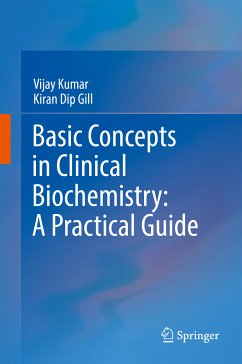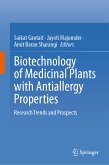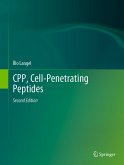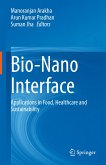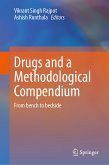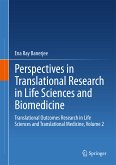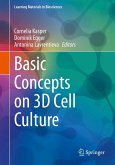96,95 €
96,95 €
inkl. MwSt.
Sofort per Download lieferbar

48 °P sammeln
96,95 €
Als Download kaufen

96,95 €
inkl. MwSt.
Sofort per Download lieferbar

48 °P sammeln
Jetzt verschenken
Alle Infos zum eBook verschenken
96,95 €
inkl. MwSt.
Sofort per Download lieferbar
Alle Infos zum eBook verschenken

48 °P sammeln
- Format: PDF
- Merkliste
- Auf die Merkliste
- Bewerten Bewerten
- Teilen
- Produkt teilen
- Produkterinnerung
- Produkterinnerung

Bitte loggen Sie sich zunächst in Ihr Kundenkonto ein oder registrieren Sie sich bei
bücher.de, um das eBook-Abo tolino select nutzen zu können.
Hier können Sie sich einloggen
Hier können Sie sich einloggen
Sie sind bereits eingeloggt. Klicken Sie auf 2. tolino select Abo, um fortzufahren.

Bitte loggen Sie sich zunächst in Ihr Kundenkonto ein oder registrieren Sie sich bei bücher.de, um das eBook-Abo tolino select nutzen zu können.
Includes step-by-step, easy to follow protocols Provides key tips and expert implementation advice to ensure quality results Provides up-to-date techniques along with a brief theoretical introduction for each section
- Geräte: PC
- ohne Kopierschutz
- eBook Hilfe
- Größe: 4.22MB
Andere Kunden interessierten sich auch für
![Biotechnology of Medicinal Plants with Antiallergy Properties (eBook, PDF) Biotechnology of Medicinal Plants with Antiallergy Properties (eBook, PDF)]() Biotechnology of Medicinal Plants with Antiallergy Properties (eBook, PDF)144,95 €
Biotechnology of Medicinal Plants with Antiallergy Properties (eBook, PDF)144,95 €![CPP, Cell-Penetrating Peptides (eBook, PDF) CPP, Cell-Penetrating Peptides (eBook, PDF)]() Ülo LangelCPP, Cell-Penetrating Peptides (eBook, PDF)128,95 €
Ülo LangelCPP, Cell-Penetrating Peptides (eBook, PDF)128,95 €![Bio-Nano Interface (eBook, PDF) Bio-Nano Interface (eBook, PDF)]() Bio-Nano Interface (eBook, PDF)120,95 €
Bio-Nano Interface (eBook, PDF)120,95 €![Drugs and a Methodological Compendium (eBook, PDF) Drugs and a Methodological Compendium (eBook, PDF)]() Drugs and a Methodological Compendium (eBook, PDF)160,95 €
Drugs and a Methodological Compendium (eBook, PDF)160,95 €![Perspectives in Translational Research in Life Sciences and Biomedicine (eBook, PDF) Perspectives in Translational Research in Life Sciences and Biomedicine (eBook, PDF)]() Ena Ray BanerjeePerspectives in Translational Research in Life Sciences and Biomedicine (eBook, PDF)72,95 €
Ena Ray BanerjeePerspectives in Translational Research in Life Sciences and Biomedicine (eBook, PDF)72,95 €![Basic Concepts on 3D Cell Culture (eBook, PDF) Basic Concepts on 3D Cell Culture (eBook, PDF)]() Basic Concepts on 3D Cell Culture (eBook, PDF)64,95 €
Basic Concepts on 3D Cell Culture (eBook, PDF)64,95 €![Essential Current Concepts in Stem Cell Biology (eBook, PDF) Essential Current Concepts in Stem Cell Biology (eBook, PDF)]() Essential Current Concepts in Stem Cell Biology (eBook, PDF)60,95 €
Essential Current Concepts in Stem Cell Biology (eBook, PDF)60,95 €-
-
-
Includes step-by-step, easy to follow protocols
Provides key tips and expert implementation advice to ensure quality results
Provides up-to-date techniques along with a brief theoretical introduction for each section
Dieser Download kann aus rechtlichen Gründen nur mit Rechnungsadresse in A, B, BG, CY, CZ, D, DK, EW, E, FIN, F, GR, HR, H, IRL, I, LT, L, LR, M, NL, PL, P, R, S, SLO, SK ausgeliefert werden.
Produktdetails
- Produktdetails
- Verlag: Springer Nature Singapore
- Seitenzahl: 175
- Erscheinungstermin: 30. März 2018
- Englisch
- ISBN-13: 9789811081866
- Artikelnr.: 52939218
- Verlag: Springer Nature Singapore
- Seitenzahl: 175
- Erscheinungstermin: 30. März 2018
- Englisch
- ISBN-13: 9789811081866
- Artikelnr.: 52939218
- Herstellerkennzeichnung Die Herstellerinformationen sind derzeit nicht verfügbar.
Prof. Kiran Dip Gill obtained her Ph.D. degree in Biochemistry from Punjab Agriculture University, Ludhiana, India in 1974. She was a postdoctoral fellow at University of Gottingen, Germany in 1977-1978. In 1981, she joined department of Biochemistry, Postgraduate Institute of Medical Education and Research, Chandigarh, India. She has taught Biochemistry to post-graduate students for almost 35 years. She was also in-charge of clinical biochemistry lab, where biochemical investigations are done routinely. She has authored four chapters in books and published more than 125 research papers in her career. She is recipient of several awards for her contribution in research work.
Dr. Vijay Kumar obtained his Ph.D. degree in Biochemistry under the guidance of Prof. Kiran Dip Gill from Post Graduate Institute of Medical Education and Research, Chandigarh in 2009. In 2010, he joined Maharshi Dayanand University, Rohtak. Since then, he is actively involved in teaching Biochemistry to post-graduate students. He has published more than 20 research papers and three review articles in reputed journals.
Dr. Vijay Kumar obtained his Ph.D. degree in Biochemistry under the guidance of Prof. Kiran Dip Gill from Post Graduate Institute of Medical Education and Research, Chandigarh in 2009. In 2010, he joined Maharshi Dayanand University, Rohtak. Since then, he is actively involved in teaching Biochemistry to post-graduate students. He has published more than 20 research papers and three review articles in reputed journals.
Common clinical laboratory hazards and waste disposal.- Blood collection and preservation.- Quality Control in laboratory.- Automation in clinical laboratory.- Photometry-Colorimeter and Spectrophotometer.- Preparation of general laboratory solutions and buffers.- Examination of urine for normal constituents.- To perform qualitative tests for urinary proteins.- To determine the quantity of proteins in urine sample using Biuret reaction.- To estimate the amount of total protein and albumin in serum and to find A/G ratio.- To perform qualitative test for reducing substances in urine.- Quantitative analysis of reducing sugars in urine.- Estimation of blood glucose levels by Glucose Oxidase method.- Estimation of blood glucose levels by Folin and Wu method.- To perform Glucose Tolerance Test.- Estimation of urea in serum and urine.- To determine urea clearance.- To estimate creatinine level in serum and urine by Jaffe's reaction.- To determine creatinine clearance.- To determine the uric acid concentration in serum and urine.- Estimation of total calcium in serum and urine.- Estimation of inorganic phosphorus in serum and urine.- To estimate the amount of total cholesterol in serum.- To estimate total and direct bilirubin in serum.- To determine Alanine and Aspartate Transaminases activity in serum.- To estimate the activity of alkaline phosphatase in serum.- To estimate the activity of acid phosphatase in serum.- To determine serum and urinary amylase activity.- To estimate the activity of lipase in serum.- Qualitative analysis of ketone bodies in urine.- Qualitative test for bile pigments and urobilinogen in urine.- Determination of total lactate dehydrogenase activity in serum.- To measure the activity of Creatine kinase-MB and Total Creatine kinase in serum.- Analysis of Cerebrospinal Fluid for proteins and sugars.- To analyze lipid profile from given serum sample.- To determine sodium and potassium in serum by using Flame photometry.- To perform Radioimmunoassay.-To perform Enzyme linked Immunosorbant assay.- Some important case studies.
Common clinical laboratory hazards and waste disposal.- Blood collection and preservation.- Quality Control in laboratory.- Automation in clinical laboratory.- Photometry-Colorimeter and Spectrophotometer.- Preparation of general laboratory solutions and buffers.- Examination of urine for normal constituents.- To perform qualitative tests for urinary proteins.- To determine the quantity of proteins in urine sample using Biuret reaction.- To estimate the amount of total protein and albumin in serum and to find A/G ratio.- To perform qualitative test for reducing substances in urine.- Quantitative analysis of reducing sugars in urine.- Estimation of blood glucose levels by Glucose Oxidase method.- Estimation of blood glucose levels by Folin and Wu method.- To perform Glucose Tolerance Test.- Estimation of urea in serum and urine.- To determine urea clearance.- To estimate creatinine level in serum and urine by Jaffe's reaction.- To determine creatinine clearance.- To determine the uric acid concentration in serum and urine.- Estimation of total calcium in serum and urine.- Estimation of inorganic phosphorus in serum and urine.- To estimate the amount of total cholesterol in serum.- To estimate total and direct bilirubin in serum.- To determine Alanine and Aspartate Transaminases activity in serum.- To estimate the activity of alkaline phosphatase in serum.- To estimate the activity of acid phosphatase in serum.- To determine serum and urinary amylase activity.- To estimate the activity of lipase in serum.- Qualitative analysis of ketone bodies in urine.- Qualitative test for bile pigments and urobilinogen in urine.- Determination of total lactate dehydrogenase activity in serum.- To measure the activity of Creatine kinase-MB and Total Creatine kinase in serum.- Analysis of Cerebrospinal Fluid for proteins and sugars.- To analyze lipid profile from given serum sample.- To determine sodium and potassium in serum by using Flame photometry.- To perform Radioimmunoassay.-To perform Enzyme linked Immunosorbant assay.- Some important case studies.
